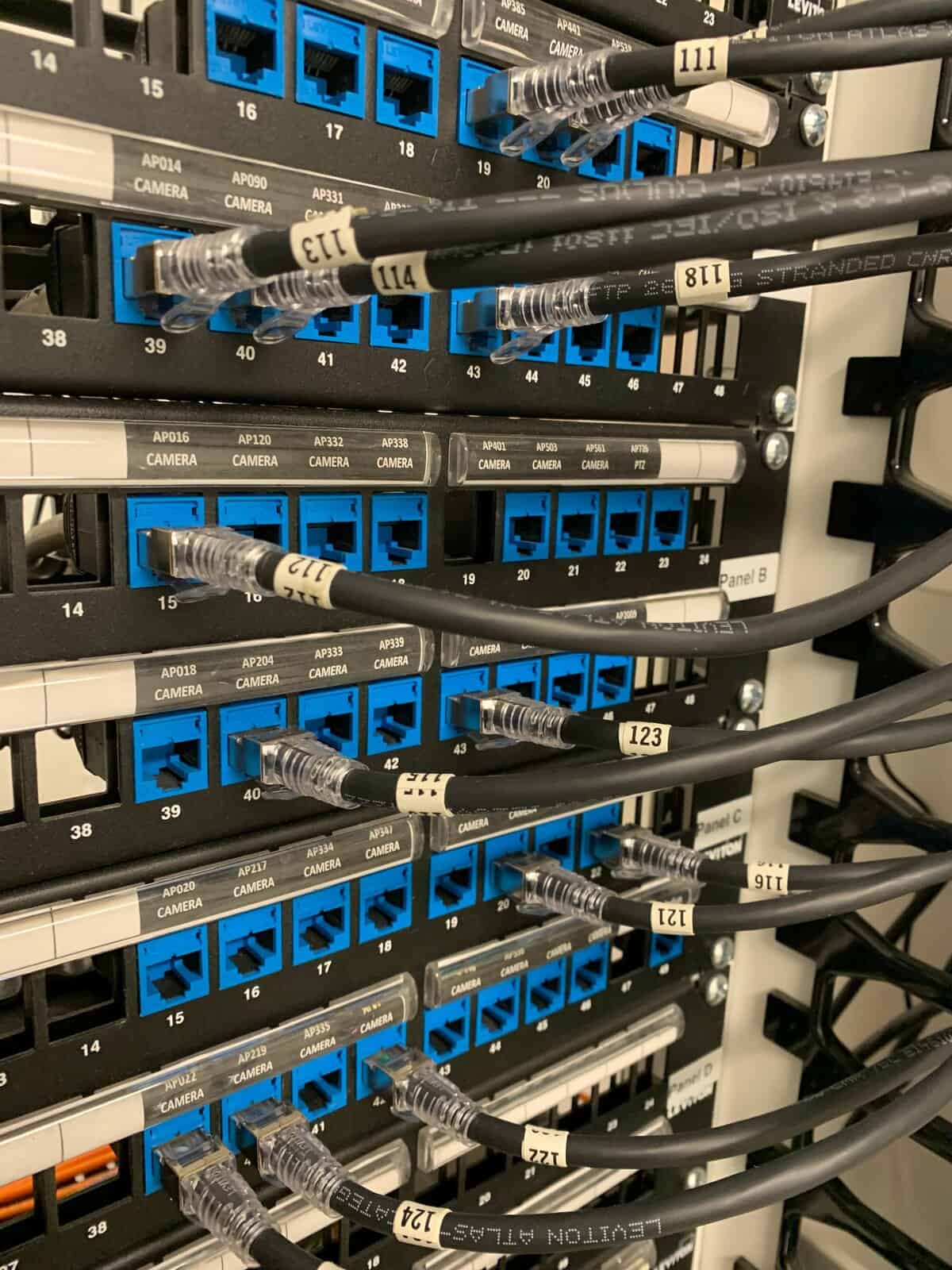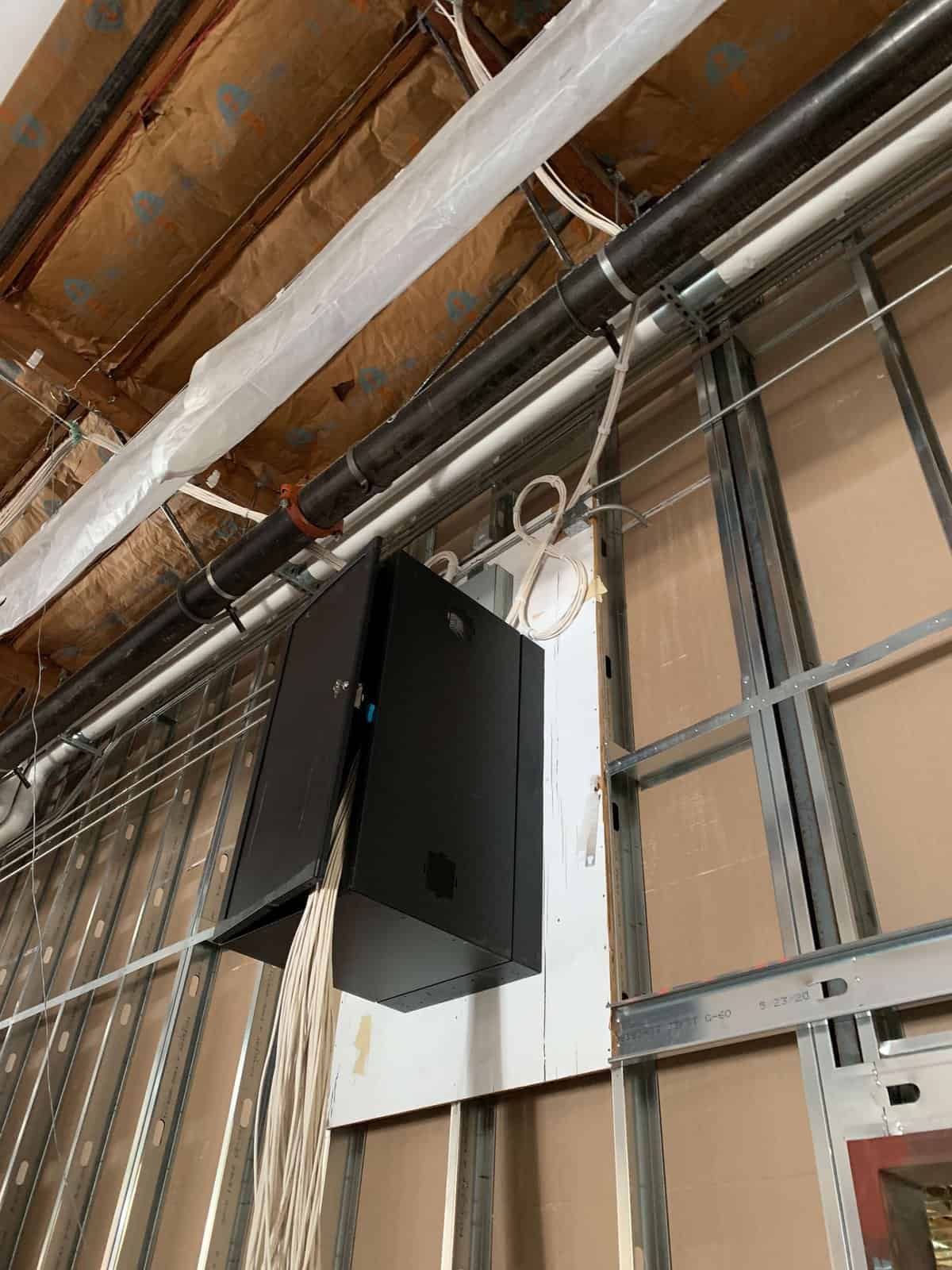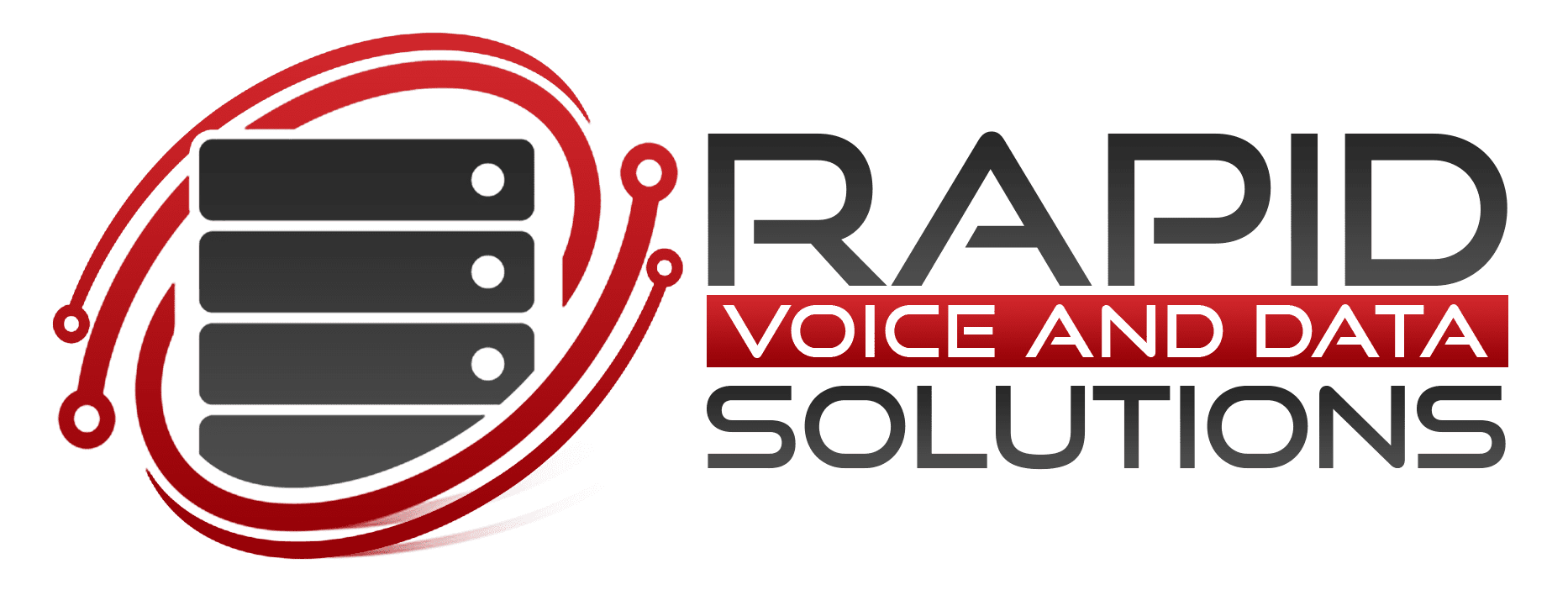STRUCTURED CABLING
The Basics of Structured Cabling
In this modern world, where everything needed is immediately available at our fingertips, it can be easy to forget that our technology relies on physical systems. Moreover, the term “the cloud” can make it seem like our information lives in the atmosphere, and everything on the Internet is stored on physical servers. Those servers — and all technical ethernet systems — need to be supported with proper design, setup, and maintenance to run efficiently and securely.
If you’re ready to get started on structured cabling solutions for your business in San Diego, Anaheim, or the surrounding cities, contact Rapid Voice & Data Solutions today!

What is the installation of CAT6 Structured Cabling?
Firstly, structured cabling is a streamlined approach to telecommunications and data infrastructure for a building or campus. It simplifies and organizes a company’s digital infrastructure, avoiding the need for a lot of cables and making room for future growth.
What Came Before Structured Cabling?
Surprisingly in the past, all cables in a building’s digital infrastructure were “point-to-point,” meaning that there was a cable running from every single piece of hardware all the way to what it needed to be connected to. Such a system is inefficient, disorganized, and difficult to modify as companies grow and add or change technology.
How Does Structured Cabling Work?
Structured cabling was developed as a solution to modern companies’ ever-increasing reliance on technology. Nonetheless, structured cabling creates a “structure” for an organization’s digital infrastructure with patch panels and trunks. All hardware is connected to an MDA (main distribution area), which acts as a hub for all the information that needs to move from one point to another.

What Are the Benefits of Structured Cabling?
However structured cabling is cleaner, more efficient, and more easily modified. It’s a fact of life that technology changes quickly. In the past, upgrading or adding technology meant changing out countless cables and disrupting operations for extended periods of time. As a result of now, it’s a simple matter of unplugging the old tech and plugging in the new tech. This makes room for your company’s technology to evolve as it evolves.
To streamline your digital infrastructure with structured cabling, contact the expert team at Rapid Voice & Data Solutions today. We serve clients in San Diego County, Orange County –Anaheim, and the surrounding areas of Southern California.

Common Uses for Structured Cabling
When point-to-point cabling no longer serves a growing company’s needs, investing in structured cabling is a good move that will serve the company far into the future. Companies commonly switch to structured cabling for some or all of these reasons:
| • Increased audio/visual needs to support streaming and remote teams | |
| • Upgrading to fiber optic cabling to obtain significantly higher connection speeds | |
| • Supporting a data center by enhancing the layout, organization, and performance of data centers | |
| • Supporting a distributed antenna system for Wi-Fi and mass notification capabilities | |
| • Network cabling to connect all of a company’s technology | |
| • Better security to connect all of a company’s security equipment for enhanced surveillance and protection |
The 6 Subsystems of Structured Cabling
- Entrance facilities are where the service provider’s wiring ends and the company’s wiring begins.
- Equipment rooms house equipment or consolidation points.
- Backbone cabling provides interconnection between telecommunication rooms, entrance facilities, equipment rooms, or buildings. It is known as the “skeleton” of the network.
- Horizontal cabling runs from a telecommunications equipment outlet to the telecommunications room or enclosure.
- Telecommunication rooms connect the horizontal and backbone cabling to consolidate and distribute all digital traffic.
- Work area components connect the end user’s equipment to the outlets of the horizontal cabling system.
The Different Types of Cabling for Infrastructure
Not all cables are created equal. CAT5E, CAT6, and fiber optics are integral components of a structured cabling system. These cables differ in speed, bandwidth, cost, and susceptibility to interference. Choosing the right cables is crucial for building a system that meets your company’s current needs and accommodates future growth.That’s why Rapid Voice and Data Solutions aims to provide Southern California businesses with the best installation they deserve.
